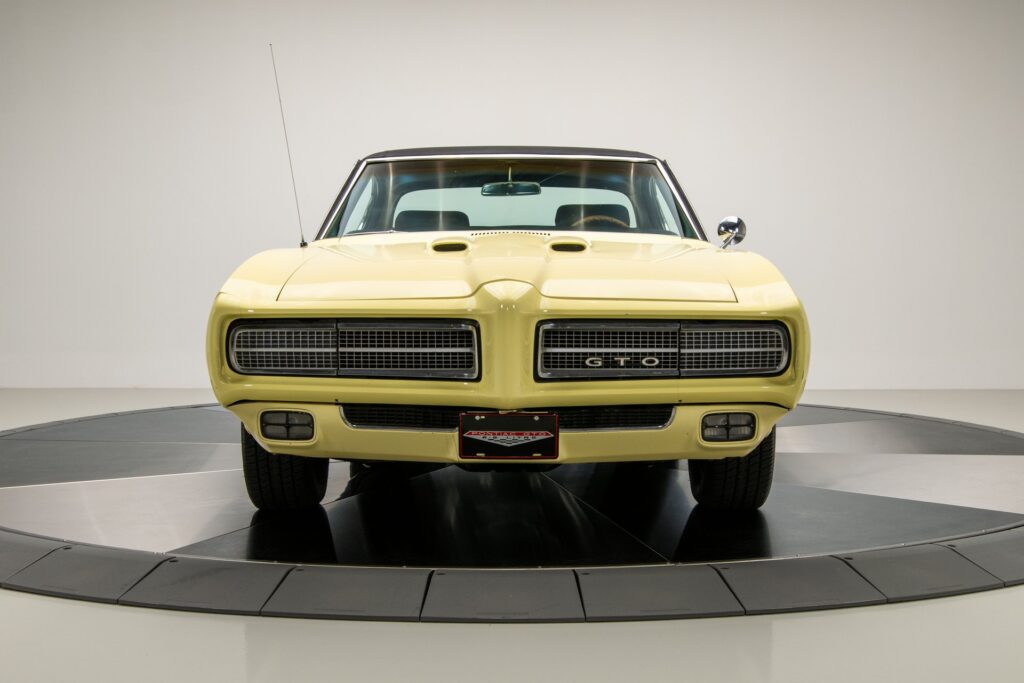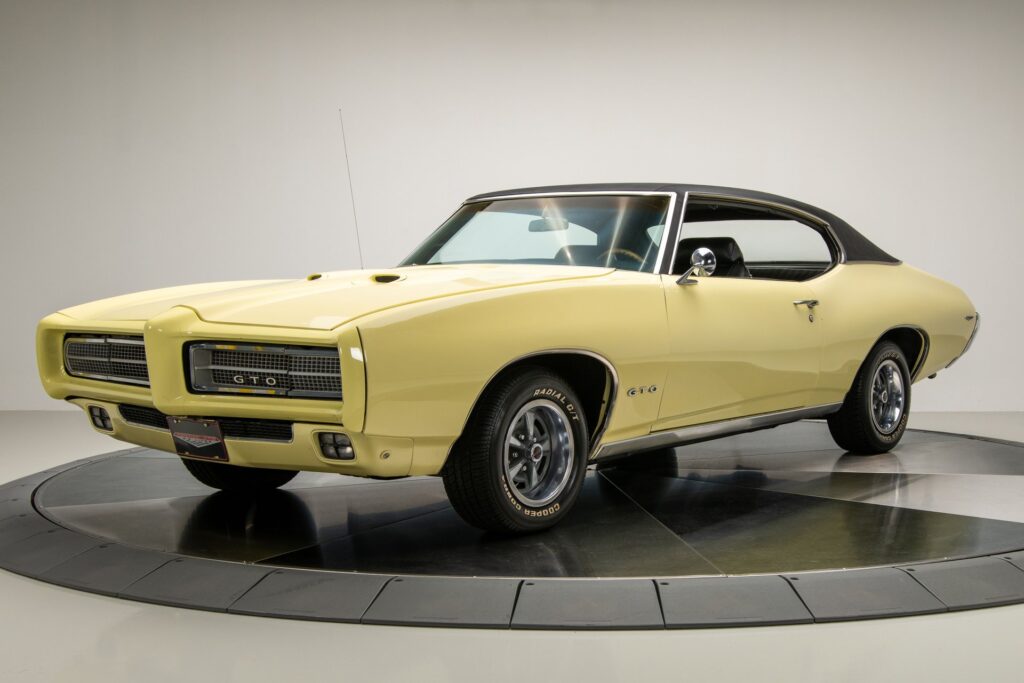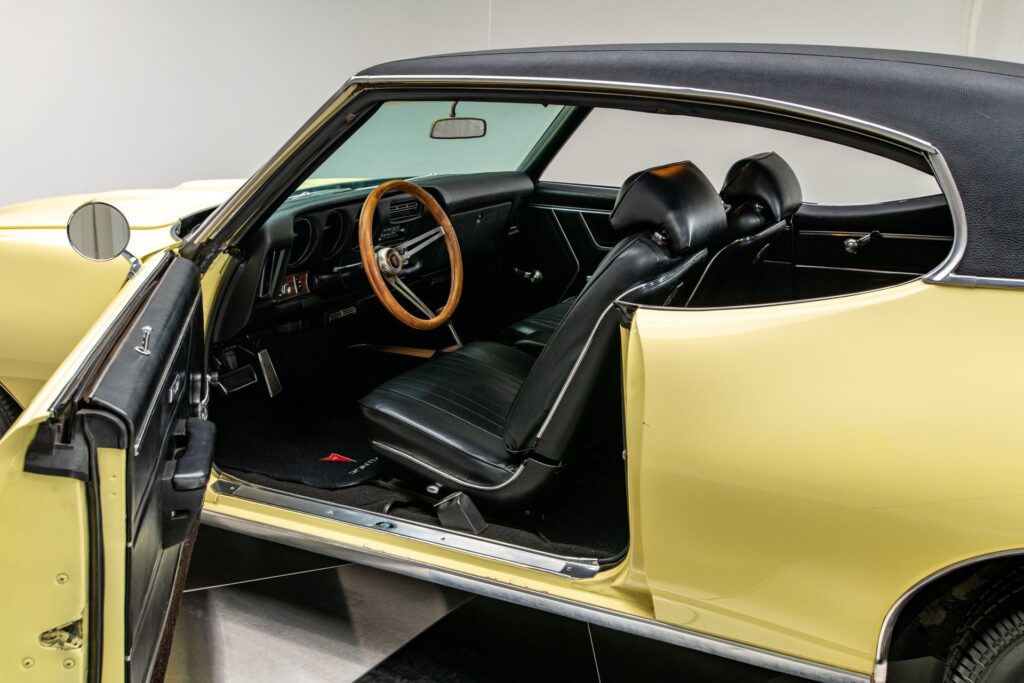
The 1969 Pontiac GTO, the iconic “Goat,” is a muscle car legend, but even die-hard enthusiasts might not know some of the lesser-known stories and quirks behind its creation, marketing, and legacy. Here’s a dive into the fascinating, lesser-trodden details of the 1969 GTO’s story that add depth to its mythos.
1. The Judge’s Unexpected Inspiration
While most enthusiasts know the GTO Judge was named after a comedic skit from Rowan & Martin’s Laugh-In(“Here come de Judge!”), few realize how close it came to having a completely different name. Pontiac initially considered calling it the “GTO ET” (Elapsed Time, a nod to drag racing), aiming to compete directly with the budget-friendly Plymouth Road Runner. However, John DeLorean, Pontiac’s visionary chief engineer, pushed for a name with more cultural pizzazz. The Laugh-In reference was a last-minute stroke of marketing genius, tapping into the era’s pop culture to make the Judge stand out. This decision turned a performance package into an icon, but it was nearly just another acronym.
2. The Secret Ram Air IV Rarity
The Ram Air IV engine, a 400-cubic-inch V8 pumping out 370 horsepower, is revered as the ultimate GTO powerplant, but its production numbers are staggeringly low. Only 759 GTOs (including 147 Judges) got this engine in 1969, making it one of the rarest options. What’s less known is that Pontiac engineers had to fight internal corporate resistance to include it. General Motors was wary of escalating the horsepower wars due to safety and insurance concerns, and the Ram Air IV was nearly axed. Its survival was thanks to a small group of engineers who argued it was essential for the GTO’s street cred. Collectors today chase these cars, with pristine examples fetching over $150,000 at auction.

3. The Hood Tach’s Hidden Flaw
The optional hood-mounted tachometer is one of the GTO’s coolest features, giving it a race-car vibe. But enthusiasts might not know it was a love-hate feature for owners. Positioned on the hood, it was tough to read in bright sunlight or at night, rendering it more style than substance for some drivers. Pontiac’s designers knew this but included it anyway, prioritizing the “wow” factor. Some owners retrofitted aftermarket lighting to make it functional, and today, a working hood tach is a prized feature in restored GTOs.
4. The Judge’s Color Controversy
The Judge’s signature Carousel Red (a vibrant orange hue) is legendary, but Pontiac initially planned for it to be the only color available for the Judge to keep production costs low and create a distinct brand identity. Dealers and buyers, however, pushed back, wanting more variety. By mid-1969, Pontiac relented, offering colors like Midnight Green and Matador Red. This decision diluted the Judge’s visual exclusivity but made it more accessible. Carousel Red Judges remain the most coveted, with only about 2,000 built in that hue.
5. The GTO’s Covert Drag Racing Roots
While the GTO wasn’t a factory race car like some rivals, it had a clandestine connection to drag racing culture. Pontiac quietly supported a handful of drag racers who modified GTOs for the strip, including legends like Arnie “The Farmer” Beswick. Beswick’s 1969 GTO, nicknamed “Tameless Tiger,” was a testbed for Pontiac’s performance parts, running quarter-mile times in the low 12-second range. Pontiac never officially sponsored NHRA teams with the GTO, but these backdoor efforts helped build its reputation as a street king, a fact often overlooked by enthusiasts focused on its showroom specs.

6. The Convertible’s Near Extinction
The 1969 GTO convertible is a rare bird, with only 7,328 built compared to over 65,000 coupes and hardtops. What’s less known is that Pontiac considered discontinuing the convertible entirely for 1969 due to declining sales and rising production costs. Convertibles were expensive to build, and safety regulations were starting to complicate open-top designs. A passionate group of Pontiac executives, believing the convertible embodied the GTO’s free-spirited ethos, fought to keep it in the lineup. Their victory preserved one of the most desirable GTO variants, but its low production makes it a unicorn today.
7. The Marketing Misstep That Almost Was
Pontiac’s advertising for the 1969 GTO leaned heavily on its rebellious, youthful image, but one proposed campaign never saw the light of day. An early draft ad pitched the GTO as “The Outlaw,” with imagery of the car evading police in a high-speed chase. The concept was scrapped when GM’s legal team flagged it as glorifying illegal behavior, especially amid growing public scrutiny of fast cars. Instead, Pontiac doubled down on the Judge’s playful Laugh-In tie-in, a safer but equally effective move that cemented the car’s cultural relevance.
8. The GTO’s Unsung Safety Innovations
Muscle cars are often seen as reckless, but the 1969 GTO quietly introduced safety features that were ahead of its time. It included a locking steering column (an anti-theft measure), energy-absorbing armrests, and optional headrests—features mandated by new federal regulations but implemented with care by Pontiac. These were overshadowed by the car’s performance hype, but they showed Pontiac’s attempt to balance powerWITH responsibility, a nuance rarely discussed among enthusiasts.
9. The Judge’s Spoiler Saga
The Judge’s rear spoiler is iconic, but its inclusion was controversial within Pontiac. Engineers debated whether it provided enough aerodynamic benefit to justify the cost. Testing showed it added minimal downforce at street-legal speeds, making it more cosmetic than functional. However, the marketing team insisted it gave the Judge a race-ready look, and they won out. Today, that spoiler is a defining feature, but some purists at the time grumbled it was “all show, no go.”
10. The GTO’s Role in Ending the Muscle Car Era
The 1969 GTO was a high point for muscle cars, but it also contributed to their downfall. Its escalating power (and that of rivals) drew attention from insurers, who began hiking rates for high-performance cars, and regulators, who pushed for stricter emissions and safety standards. By 1970, the GTO’s horsepower was detuned, and the Judge package was discontinued after 1971. The 1969 model’s unapologetic excess helped spark the backlash that ended the muscle car’s golden age, a bittersweet legacy few fans connect to the car.
Why It MattersThese hidden stories reveal the 1969 GTO as more than just a horsepower monster—it was a product of bold decisions, internal battles, and cultural timing. From the Judge’s pop-culture roots to the near-cancellation of the convertible, these tidbits show the human side of an automotive legend. For enthusiasts, they add layers to the GTO’s lore, making every rumble of its V8 a reminder of the passion, risk, and rebellion that defined an era.


